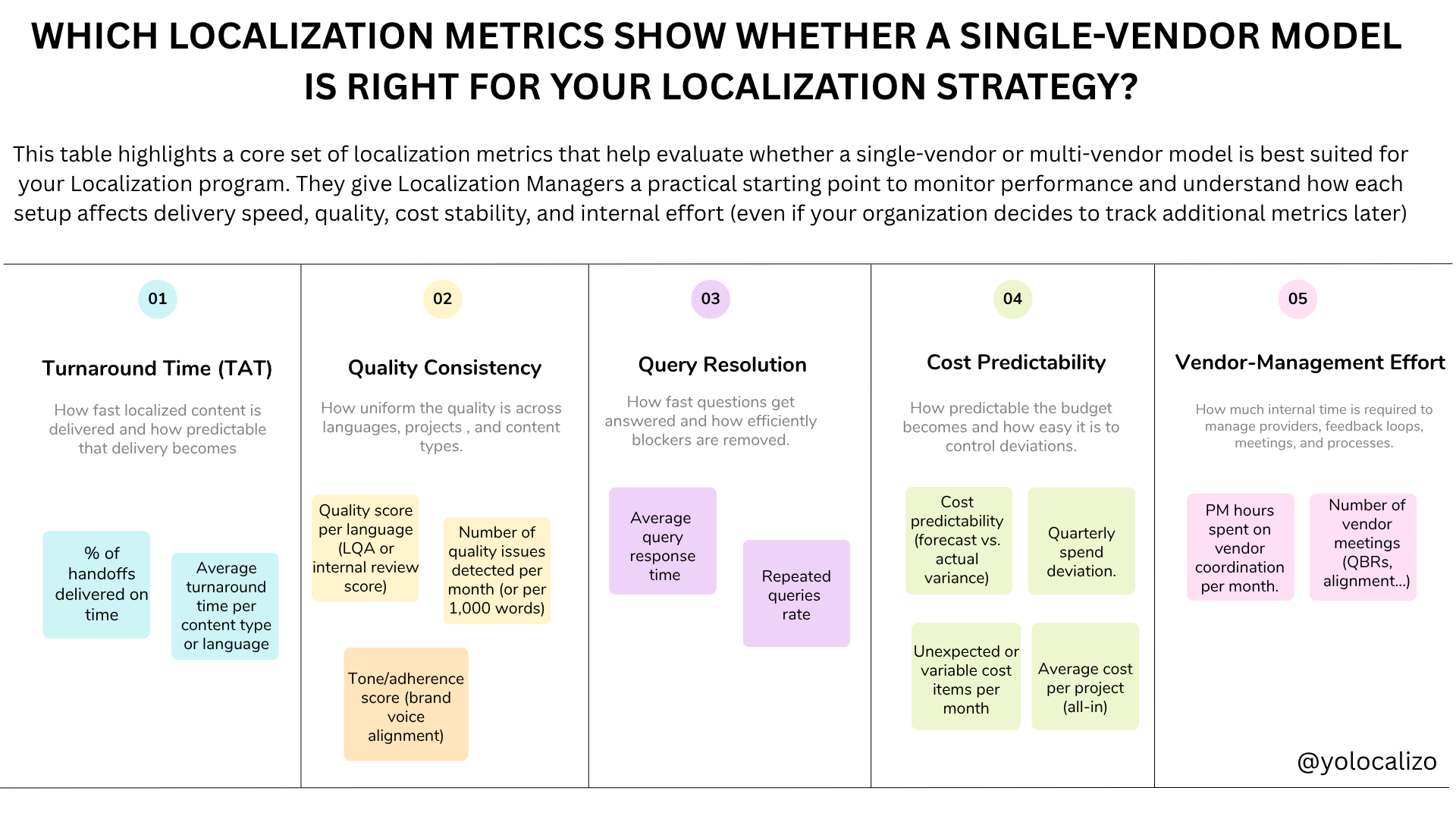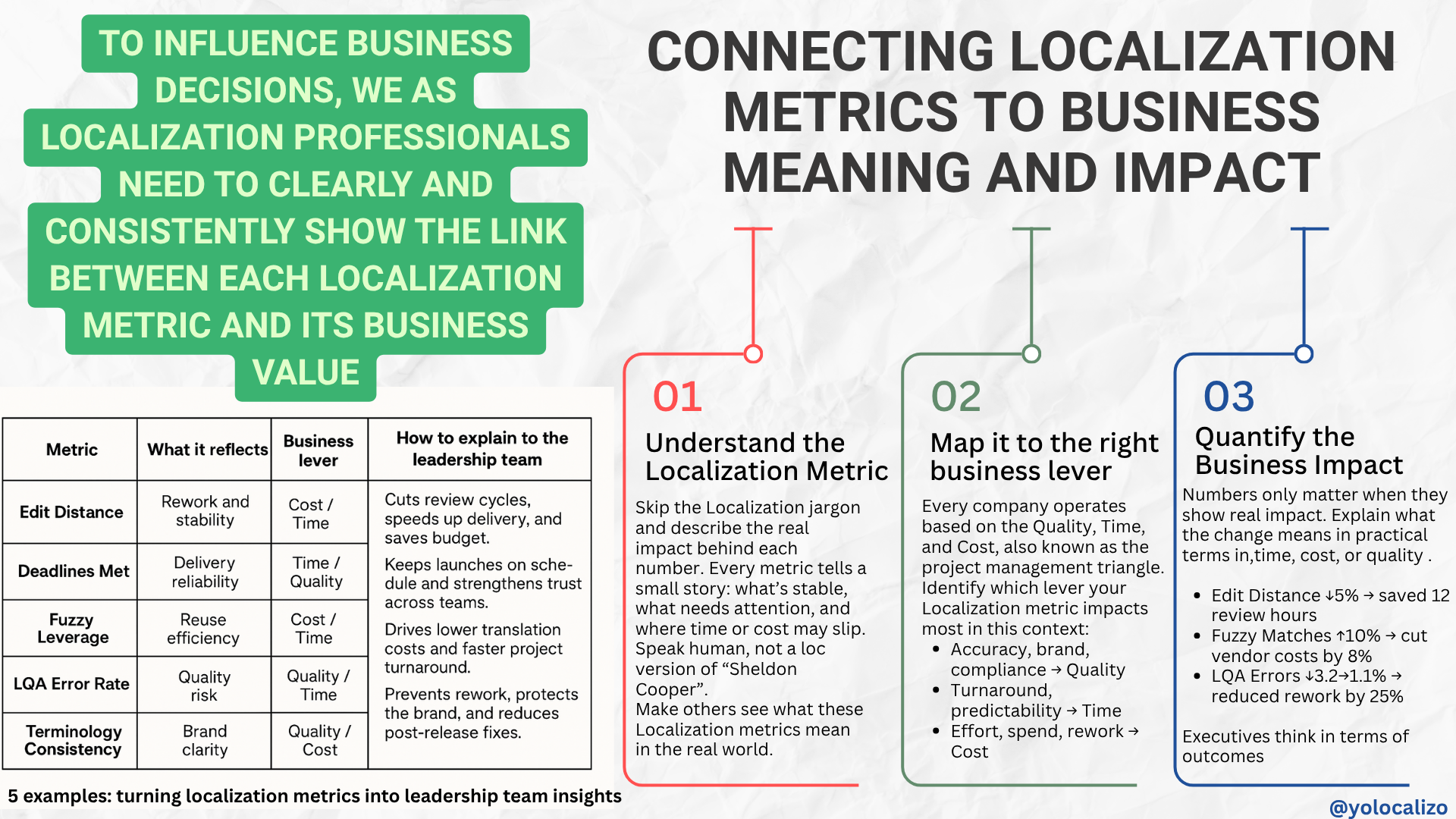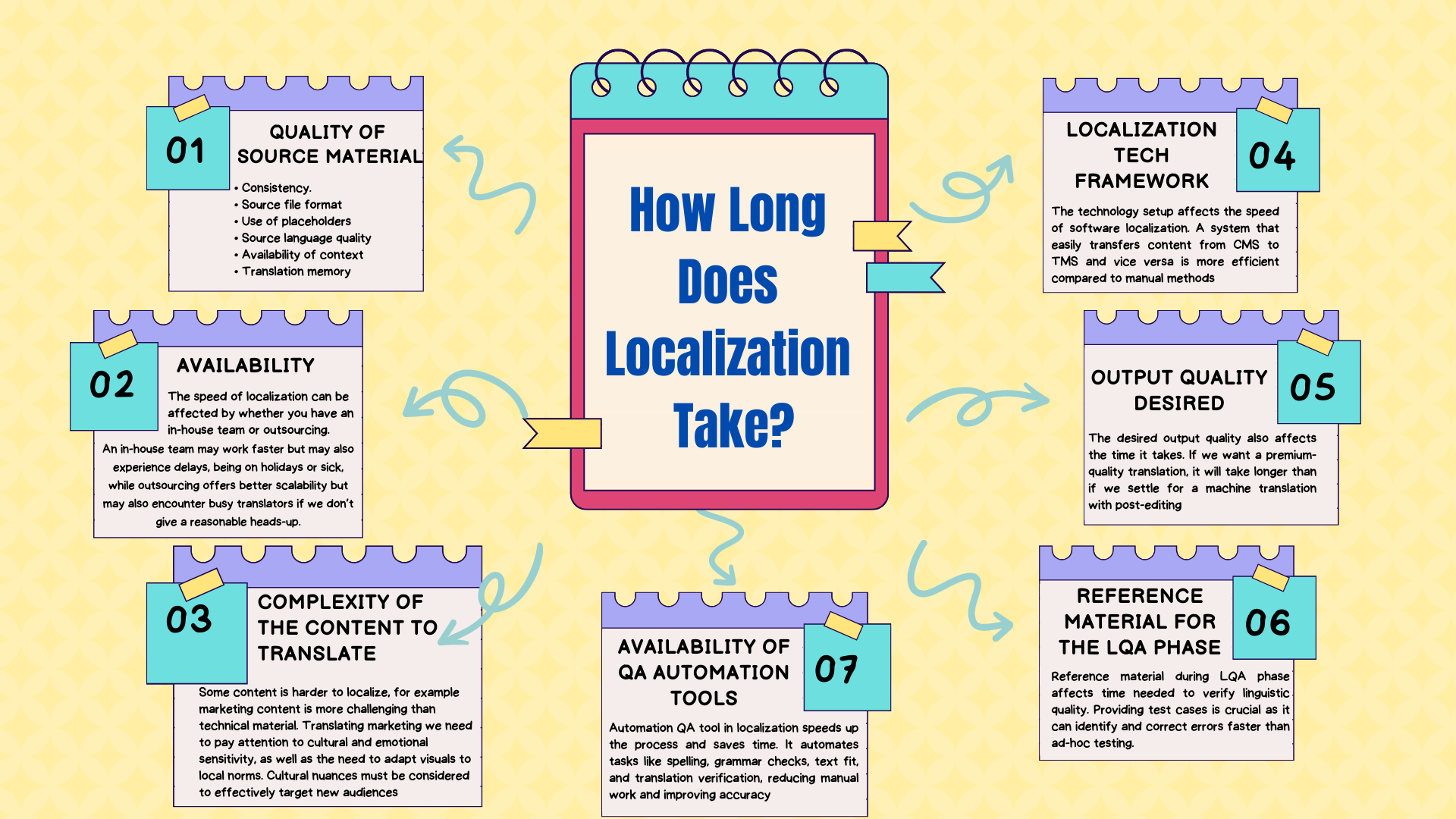Common Localization KPIs pitfalls!
There are several "moments of truth" when setting up your company's localization program.
For example, the first person you hire who ensures you stop being a one-person band doing absolutely everything, or when you get your TMS and leave spreadsheets behind, or when you start setting up your Localization KPIs ecosystem!
We often hear that "what's measured gets managed," but we don't often hear that sometimes measuring what isn't worth it is worse than having no Localization metrics!
In this post, I analyze the most common mistakes Localization teams make when they embark on quantifying their localization efforts.
When Localization Measurement Goes Wrong
I'm passionate about localization metrics, but it can also be frustrating. The passion comes from living in a world where everything is quantifiable. We have more data than ever, putting us in an excellent position to measure the impact of what we do. However, this abundance of data presents many challenges and pitfalls when implementing a Localization metrics ecosystem.
Over the years of measuring and discussing metrics, I've noticed two major pitfalls that stand out above all else.
The first one is related to Localization ROI. I won't go into much detail on this topic because it has been extensively discussed by colleagues in the industry, including myself, on this blog. Obsessing over-measuring Localization ROI can lead you down a rabbit hole and might not be the primary conversation you should have with your stakeholders, or at least not the only one.
The other significant pitfall is focusing on tracking effort KPIs and then being unable to "translate" what these effort KPIs mean and explain to the leadership team and product owners how they impact the company and its goals.
It's not very useful to measure the quality of a product or the number of words localized if you can't, in the language of senior product leaders (which involves outcome-based KPIs, conversion, revenue, engagement, and so on), explain how you're contributing to the success of the company's product.
So, without further ado, here are some common Localization pitfalls that I consistently encounter
Common Localization pitfalls
Click HERE to dowlonad the infographic
Localization ROI: Measuring the return on investment (ROI) in localization can be challenging because it's not easy to isolate the impact of localization. I'm still searching for a way to predict ROI. I know how much localization costs, but I'm uncertain about the benefits it will generate. That's because localization doesn't generate direct profits as an activity on its own. Localization helps open up new markets; you're likely to sell more if your product is localized compared to when it's not, as it breaks down the language barrier, which is crucial for monetizing. However, the exact impact of localization is unclear. Ultimately, localization is just one of the many components a digital product needs to deliver a good user experience. If the localization is excellent, but the product has functional errors, monetization will be challenging. Monetization will also be challenging if the functionality is excellent, but the localization is poor, with unclear tutorials and messages. Localization contributes to a product's success, but isolating its impact is a pitfall, in my opinion.
Effort KPIs: While measuring effort is important, solely focusing on effort KPIs may not reflect the true impact of localization. It's crucial to balance these with outcome-based business KPIs that show the results of that effort. For example, an outcome-based KPI that's very useful is user engagement. We can measure user engagement metrics such as time spent on localized pages, interaction rates, and conversion rates specific to each localized version. This shows how well the localization effort is resonating with users. Other interesting metrics under this umbrella of outcome-based KPIs include conversion rates and customer retention, to name a few.
Vanity KPIs: Vanity metrics are those that sound impressive but don't provide actionable insights. Measuring metrics just because they sound good, without a clear purpose, can be a pitfall as it doesn't contribute to effective decision-making. Examples of these vanity KPIs can be, for instance, the number of words localized. Saying that we've localized 1 million words might impress, but it doesn't tell us anything about the impact of localizing those million words on the company.
Too Many KPIs: Having too many KPIs can be counterproductive. They can be overwhelming and make it difficult to focus on the most crucial metrics. It is better to focus on a concise set of KPIs that align with your localization objectives.
Not Linking KPIs to Company Strategy: Your localization KPIs should directly tie to your overall business goals. If there's a disconnect between your KPIs and the company goals, it can lead to misaligned efforts. For example, if you monitor KPIs related to social media in localized markets, but social media isn't a focus area for the company, the effort in collecting and analyzing that data isn't an efficient use of our time and effort.
Data Hygiene: Poor data quality or inaccuracies in the data used for KPIs can lead to incorrect conclusions. Ensuring data hygiene is essential to maintaining the integrity of your KPIs. Examples of this pitfall include inaccurate translations in Translation Memory or outdated terminology with unreviewed terms, both of which are issues related to data hygiene.
Ignoring User Experience: KPIs that don't consider the user experience can be a pitfall. For instance, if you measure translation speed but not user satisfaction, you might miss the main point of why we actually do localization.
Too Much Focus on Cost Metrics: We are obsessed with tracking and reducing costs in the industry. While cost management is undeniably important, overemphasizing it can have several negative consequences. For example, it can lead to limited innovation. Innovative approaches to localization may require a higher initial investment. An exclusive focus on cost reduction can deter a localization team from exploring these creative and effective localization methods.
Summary
Tracking important metrics for our localization program is incredibly useful for showcasing our globalization efforts. As the famous project management guru Peter Drucker said, "What gets measured gets improved." However, there are so many things to measure that we can get caught in pitfalls that take us far from where we want to be. Instead of highlighting the impact of what we do, we may end up having conversations that aren't the ones we should be having when explaining how we contribute to the company's growth in international markets. I hope this list serves as a reminder and that we can avoid the "death of pitfalls metrics" 😊
@yolocalizo













This feels like a pivotal moment. Localization teams are being asked to support more markets, move faster, use AI responsibly, and show impact, not just output. Expectations are higher than ever, but many teams are still trained mainly for execution. We are strong at delivering localization work, yet we often struggle to move from output to outcome and to clearly explain the impact of what we do.